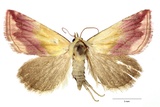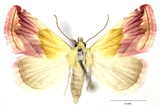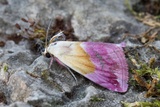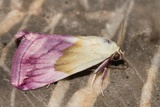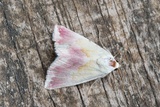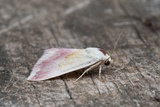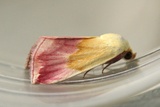Eublemma purpurina ([Denis & Schiffermüller], 1775) Species
Last modified: Nov. 12, 2025, 7:14 p.m.
A scarce migrant in Belgium, but more and more observations have been made since the first specimen in 2014 in AN.
The first larvae were found in 2021, so the species appears to be establishing itself here and the population is replenished annually by migrants.
Details
- Classification
- Family: Erebidae > Subfamily: Boletobiinae > Genus: Eublemma > Species: Eublemma purpurina
- Vernacular names
- Prachtpurperuiltje (NL), Beautiful Marbled (EN), La Noctuelle purpurine (FR), Purpur-Zwergeulchen (DE)
- First mention in Belgium
- De Prins W., Steeman C. & Sierens T. 2015. Interessante waarnemingen van Lepidoptera in België in 2014 (Lepidoptera). — Phegea 43(4): 98–103. On page 99. view page
- Status
-
Naturalised
A very rare migrant, it was first observed in Belgium in 2014. In 2018, more than 50 individuals were already known to have been from Belgium. Larvae have been found in our country.
This species is considered Least Concern according to the IUCN Red List category for Flanders 2023.
Distribution
Flight periods
The adults can be seen from early May towards late October in generally two generations a year.
Observed on
- Host plant (species):
- Cirsium vulgare and Cirsium arvense
- Host plant (genera):
- Cirsium and Carduus
The larva feeds on Cirsium and Carduus.
Habitat
The species inhabit open dry grassland.
